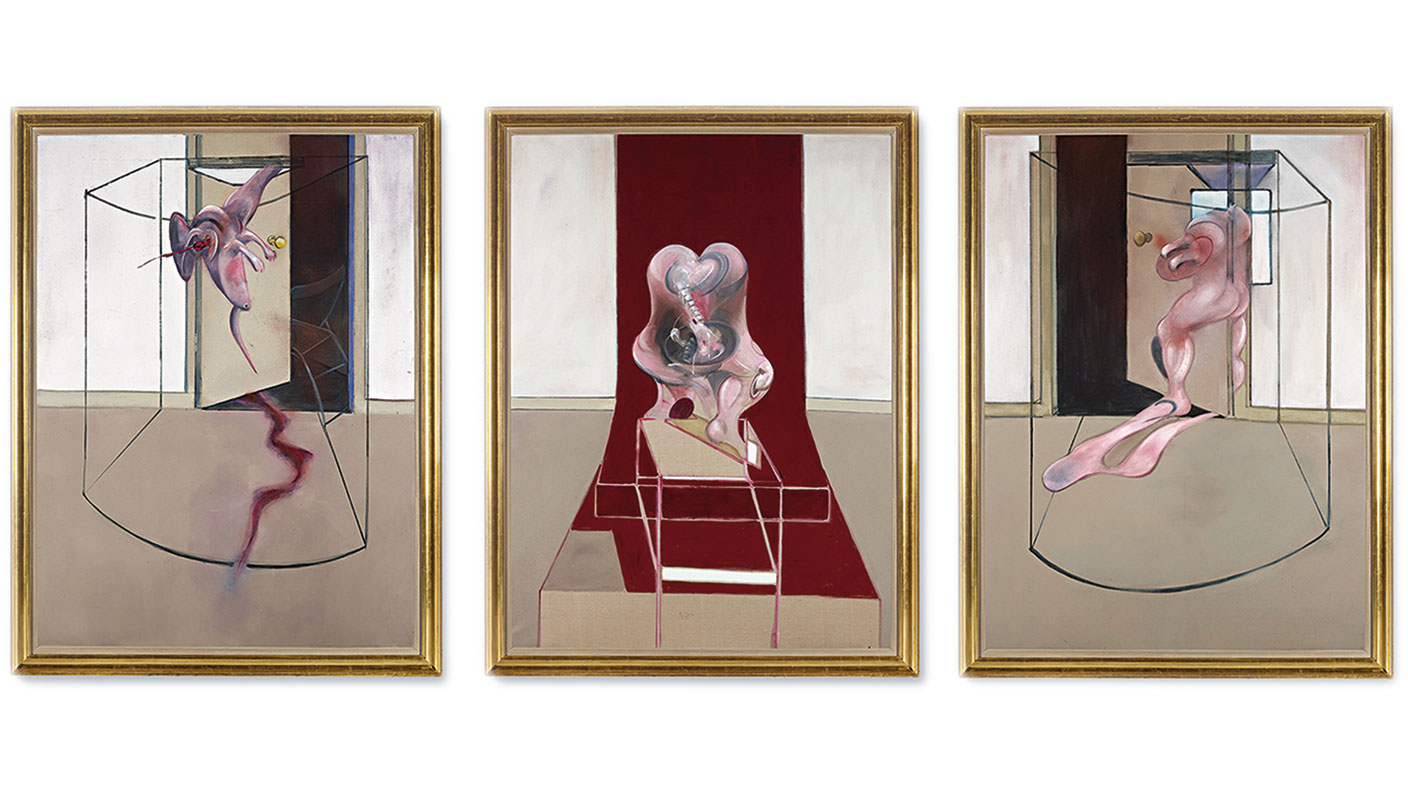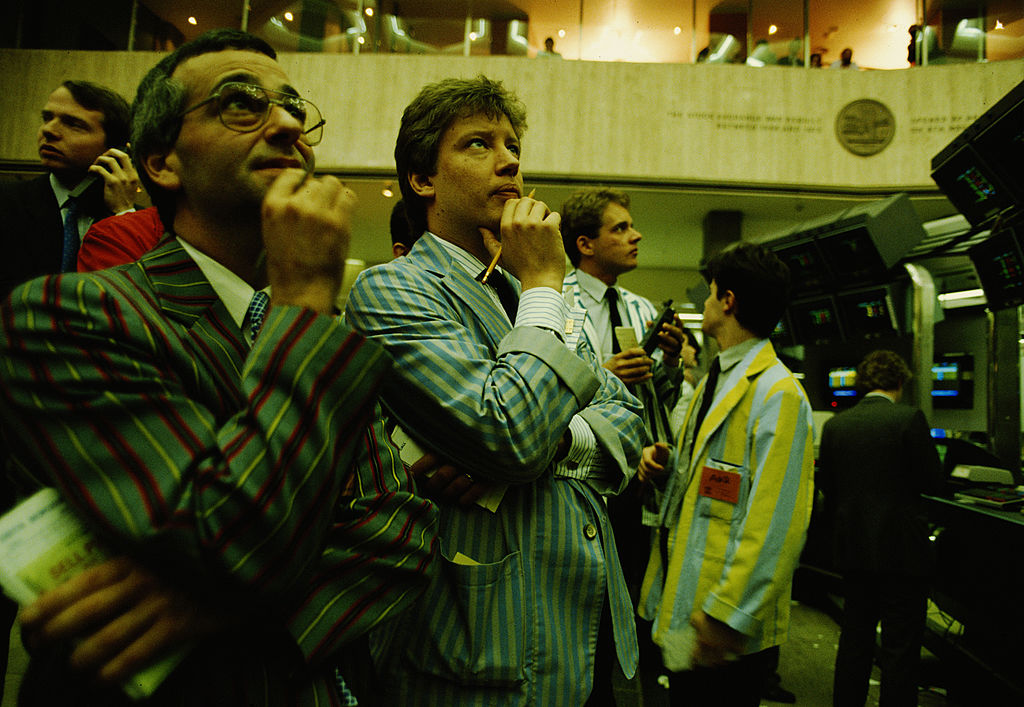The art market managed to tough it out in 2020
It’s been a difficult year, but the art market has held up surprisingly well, says Chris Carter


It’s been a tough year for auction houses. The “big three” – Christie’s, Sotheby’s and Phillips – suffered a combined 79% drop in revenue for the second quarter of 2020 compared with the same three months in 2019, according to art market analytics firm Pi-eX. Spring is usually a busy period on the art-market calendar, but the dearth was hardly surprising given the pandemic. The first wave saw art fairs and galleries around the world close, while hammers fell silent as auction sales retreated online. But therein lay the silver lining. Sotheby’s says its online sales grew “a staggering” 540% year-on-year in the seven months to August, while the average lot value at online sales has “more than doubled” to $20,000 compared with last year.
Two trends to watch
Big-ticket items at online-only auctions undoubtedly did skew the figures a bit. And judging the health of the market from these star showings is “like trying to gauge the strength of the US car market by looking at Bugatti sales”, as James Tarmy puts in on Bloomberg. But even the lower leagues of the auction market held up surprisingly well. That’s because, in 2020, two trends, both years in the making, rode to the rescue.
MoneyWeek
Subscribe to MoneyWeek today and get your first six magazine issues absolutely FREE

Sign up to Money Morning
Don't miss the latest investment and personal finances news, market analysis, plus money-saving tips with our free twice-daily newsletter
Don't miss the latest investment and personal finances news, market analysis, plus money-saving tips with our free twice-daily newsletter
The first was the growing market in Asia. Both Christie’s and Sotheby’s enjoyed strong sales in Hong Kong this autumn. Christie’s achieved HK$3bn (£287m), with an “exceptional” 88% of lots sold. The auction house called it “a phenomenal display of market strength”. It also noted that 20% of buyers were new to Christie’s. Sotheby’s said that, in the first seven months of the year, “more than 30% of all bidders and buyers in the period had never transacted with Sotheby’s before” and a fifth were coming from Asia. It also noted that “more than 30% of all bidders and buyers [were] under 40”. That leads us on to trend number two.
Christie’s welcomed “a new generation of collectors” to its autumn auctions, classing 20% as “Millennial buyers”. That chimes with a report released earlier this month from insurers Hiscox and art-market data firm ArtTactic. It found that, of collectors who have been collecting for no more than three years (most of whom were aged 35 and under), 82% bought works online between March and September compared with 36% in 2019. Nearly six in ten Millennial buyers said they were more interested and confident buying art online. However, it might yet be too soon to call time on “bricks and mortar” sales – almost half (48%) of all buyers said they preferred going to galleries and auctions, up from 36% last year, suggesting internet fatigue. But then 56% acknowledged that the art market’s move online is here to stay. It is reassuring to know that, in difficult years such as this one, buyers and sellers will always find a way to meet.
The headline-grabbers
Collectors were undeterred in snapping up major works of modern and contemporary art. The summer months proved especially fruitful for the “big three” in New York. Francis Bacon’s Triptych Inspired by the Oresteia of Aeschylus (1981) sold for $84.6m at Sotheby’s, Roy Lichtenstein’s Nude with Joyous Painting (1994) made $46.2m at Christie’s and David Hockney’s Nichols Canyon (1980) fetched $41m at Phillips. In October, collectors were shown a demonstration of the strength of the market in Asia. In Beijing, Wu Bin’s Ten Views of a Lingbi Rock, a Ming-dynasty scroll from 1610, sold for ¥ 512.9m (£58m), and in Hong Kong, Ren Renfa’s ink painting Five Drunken Princes Returning on Horseback (c.1300) fetched HK$306.5m (£29.5m). Nor was it just older works that were selling. Sanyu’s 1950s Quatre Nus painting made HK$258m (£25m) in July, underscoring the artist’s growing popularity.
A roaring success
Rare whisky didn’t repeat the headline-grabbing sales of last year. That said, in August, a new auction record was set for a bottle of Japanese whisky at Bonhams in Hong Kong, with a Yamazaki 55-Year-Old fetching HK$6.2m (£593,000). It was a good year for classic cars too – a 1934 Bugatti Type 59 Sports set a new marque record in September, selling for £9.5m in London. And for Shakespeare lovers, a rare “First Folio” fetched just shy of $10m in New York, a record for a copy of the collection of plays from 1623. In a year that saw a pair of old trainers make $615,000 (Michael Jordan’s Air Jordan 1s) and a 13.5kg chunk of the moon offered with a £2m price tag, perhaps the most surprising sale of 2020 was the $32m fetched at Christie’s in October by “Stan”, a 67-million-year-old Tyrannosaurus rex (pictured). Who knows what wonders 2021 holds for collectors?
Get the latest financial news, insights and expert analysis from our award-winning MoneyWeek team, to help you understand what really matters when it comes to your finances.

-
 MoneyWeek news quiz: How much can you win in Premium Bonds?
MoneyWeek news quiz: How much can you win in Premium Bonds?Quiz Premium Bonds, ChatGPT, and the start of the festive season all made headlines this week. How closely were you following the news?
-
 Salary sacrifice pensions cap: 3.3 million workers to be hit by contribution limits
Salary sacrifice pensions cap: 3.3 million workers to be hit by contribution limitsThe government has revealed further details of its controversial cap on pension contributions through salary sacrifice. Here is how the changes could affect you
-
 Big Short investor Michael Burry closes hedge fund Scion Capital
Big Short investor Michael Burry closes hedge fund Scion CapitalProfile Michael Burry rightly bet against the US mortgage market before the 2008 crisis. Now he is worried about the AI boom
-
 The global defence boom has moved beyond Europe – here’s how to profit
The global defence boom has moved beyond Europe – here’s how to profitOpinion Tom Bailey, head of research for the Future of Defence Indo-Pac ex-China UCITS ETF, picks three defence stocks where he'd put his money
-
 Profit from a return to the office with Workspace
Profit from a return to the office with WorkspaceWorkspace is an unloved play on the real estate investment trust sector as demand for flexible office space rises
-
 New frontiers: the future of cybersecurity and how to invest
New frontiers: the future of cybersecurity and how to investMatthew Partridge reviews the key trends in the cybersecurity sector and how to profit
-
 An “existential crisis” for investment trusts? We’ve heard it all before in the 70s
An “existential crisis” for investment trusts? We’ve heard it all before in the 70sOpinion Those fearing for the future of investment trusts should remember what happened 50 years ago, says Max King
-
 8 of the best properties for sale with wildlife ponds
8 of the best properties for sale with wildlife pondsThe best properties for sale with wildlife ponds – from a 16th-century house in the Ashdown Forest, to a property on Pembrokeshire’s Preseli Hills
-
 Why a copper crunch is looming
Why a copper crunch is loomingMiners are not investing in new copper supply despite rising demand from electrification of the economy, says Cris Sholto Heaton
-
 Where to look for Christmas gifts for collectors
Where to look for Christmas gifts for collectors“Buy now” marketplaces are rich hunting grounds when it comes to buying Christmas gifts for collectors, says Chris Carter